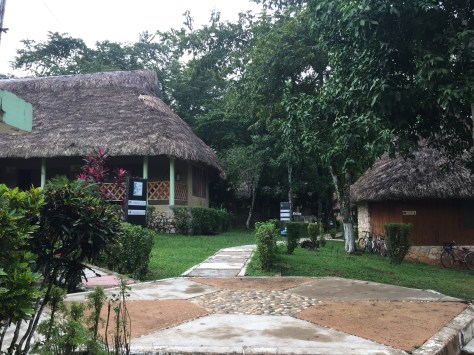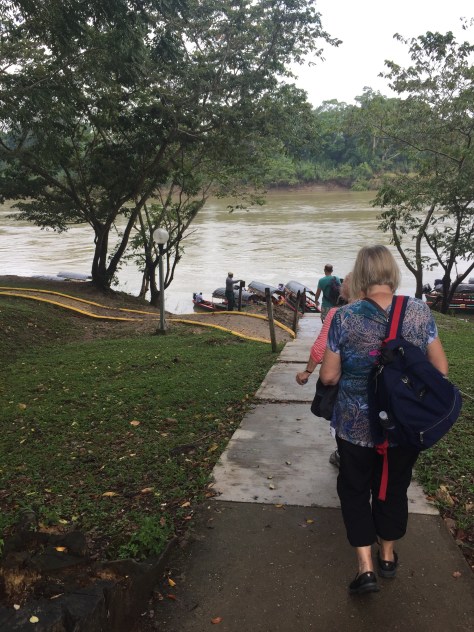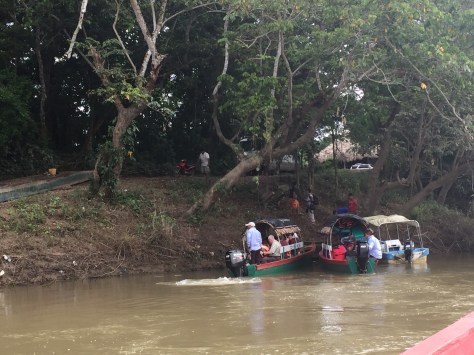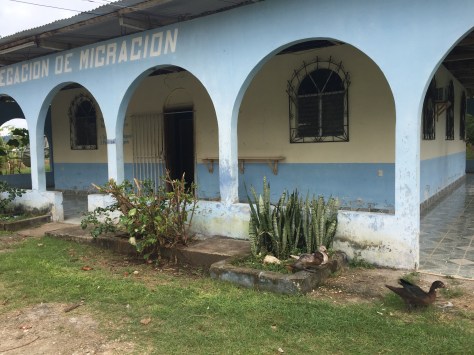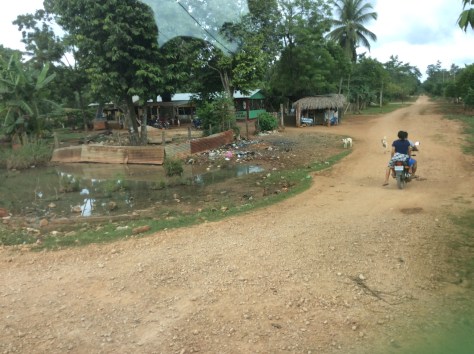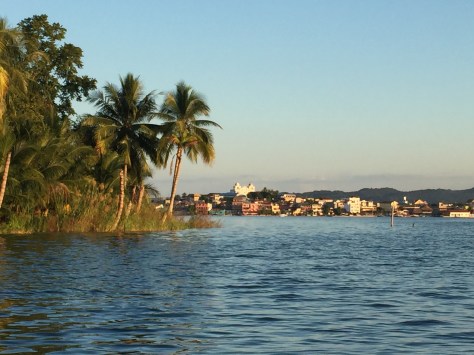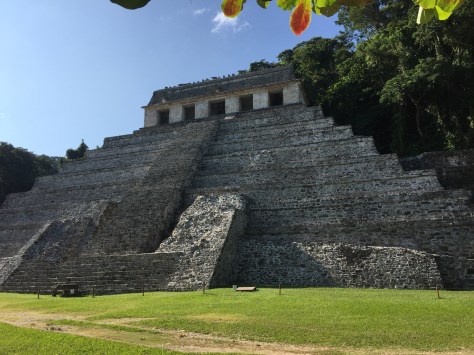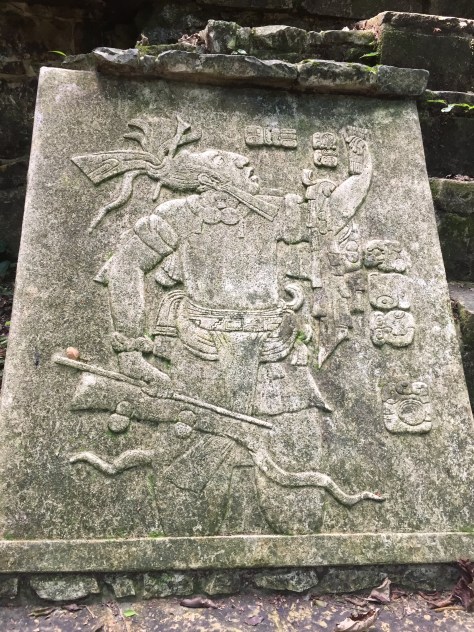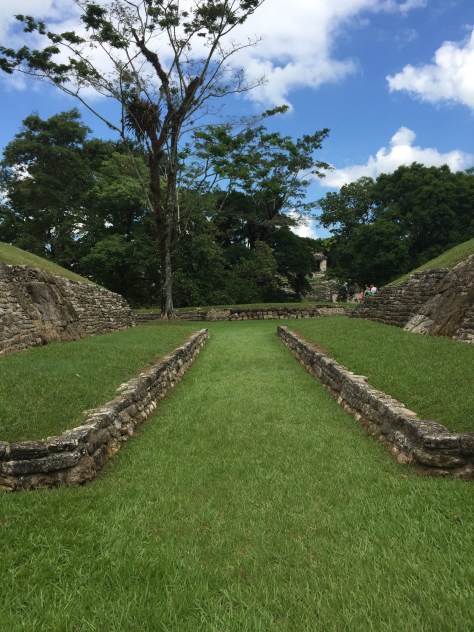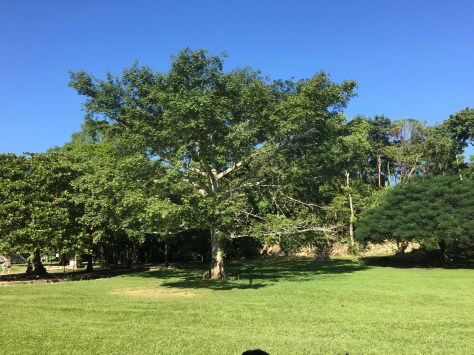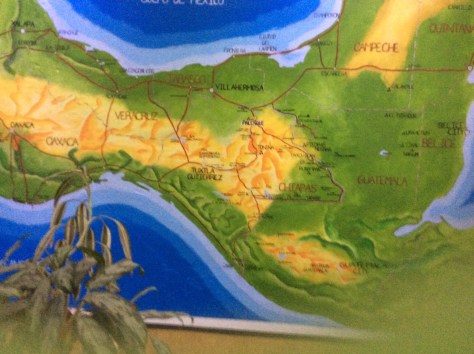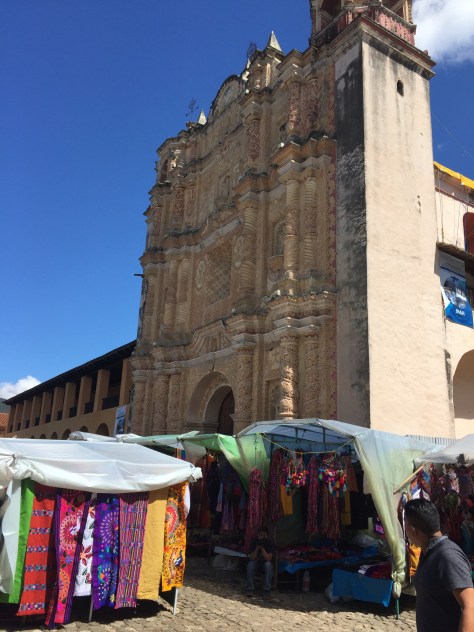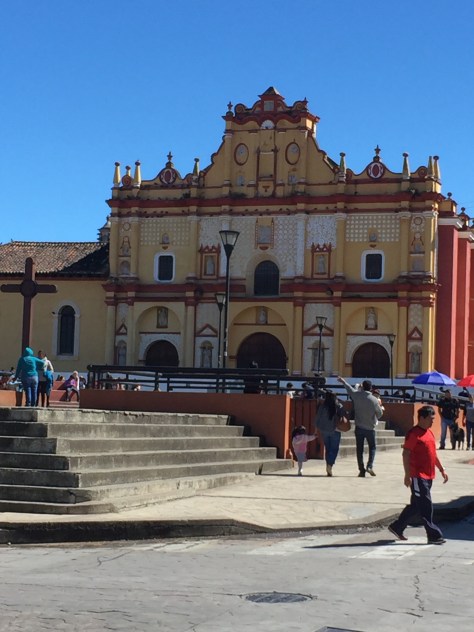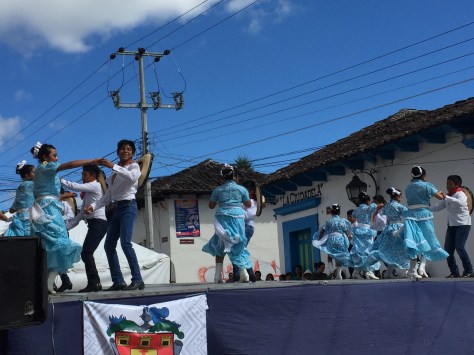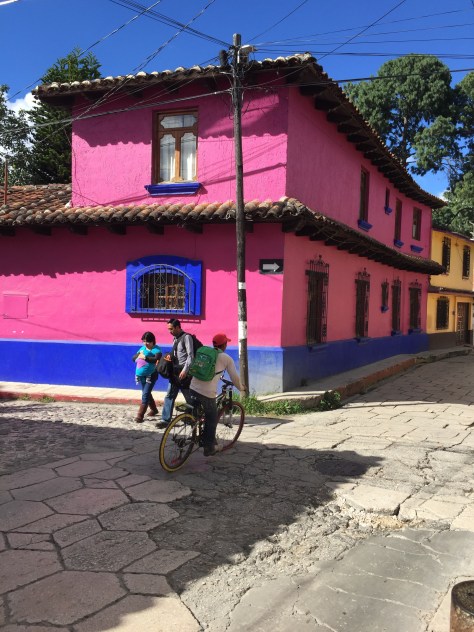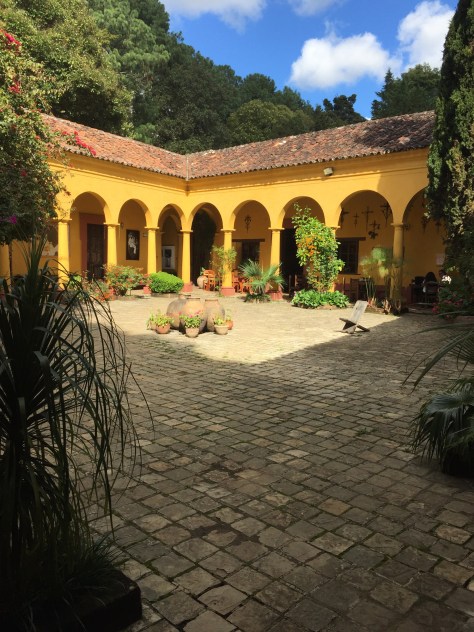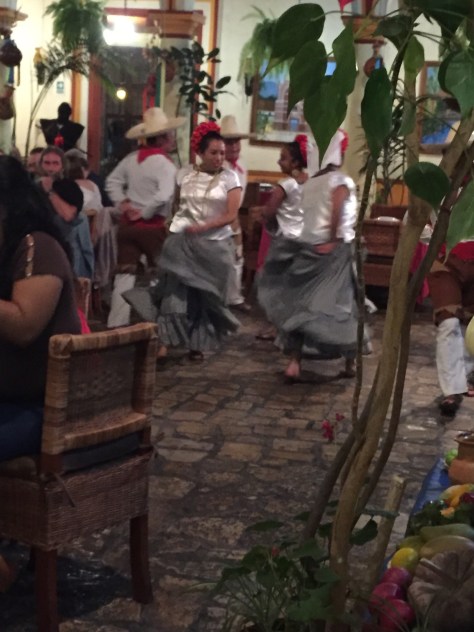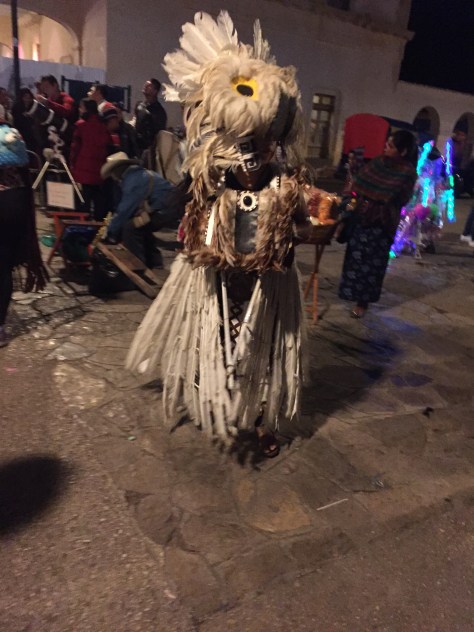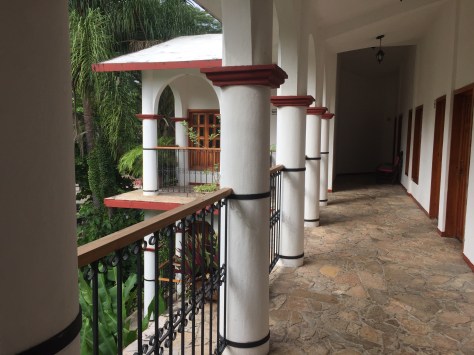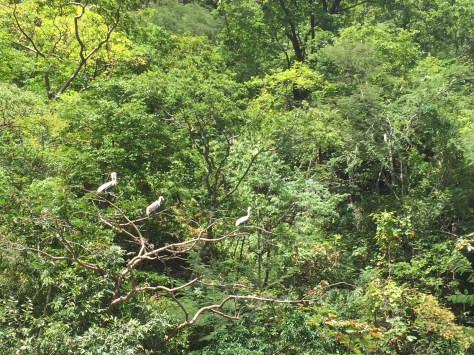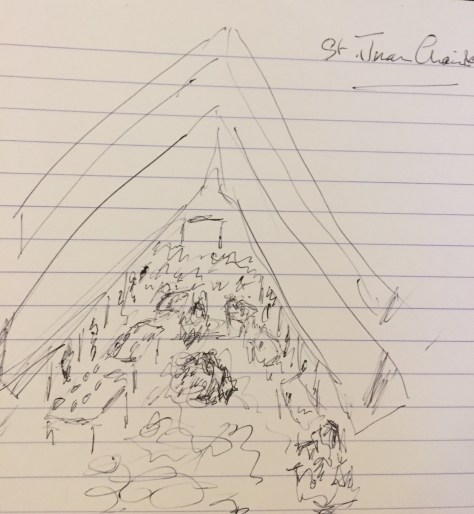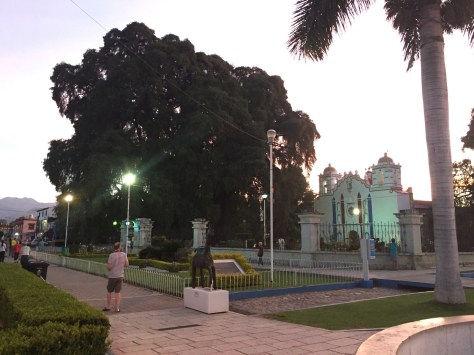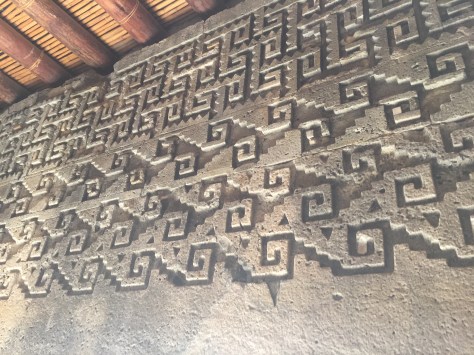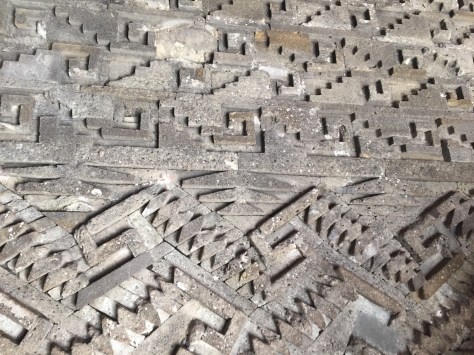It was an early start. Our bags had to be ready for collection at 5.30. In the pre dawn light we left the hotel. We were going to have our breakfast in picnic form on the bus. The sun rose as we travelled past dense tropical vegetation, banana plantations, and wooded hills with pointy peaks.

The countryside was stunning, but once again by the side of the road the people lived in poverty. They have no running water, most had no electricity, although occasionally there was a wire to indicate a connection. Most cooked on wood fires but outside one or two there was a television receiver dish. I guess we all have our priorities……… Smallholdings had chickens and pigs in evidence. Many of the wooden buildings were dilapidated. Some had been abandon. Now and then there was evidence of a new building going up.
We were in the Lacandon rainforest. Most of the vegetation was green but, now and then, a red hibiscus flower appeared.
Eventually we arrived near Bonampak our next Mayan site. To get there we had to change to smaller vehicles to travel the 10 Km’s to the ancient city ruins. Monica and I, as the smallest members of the party, were placed in the back of a vehicle on seats at floor level, described by one of our fellow travellers as ‘like a couple of spaniels in the back’!!
Bonampak was one of the cities controlled from Palenque. We arrived in the main plaza and could see the acropolis rising up where the most important paintings of the Mayan world can be found and two important stelaes (please note the incorrect spelling of ‘stele’ in my previous missives).
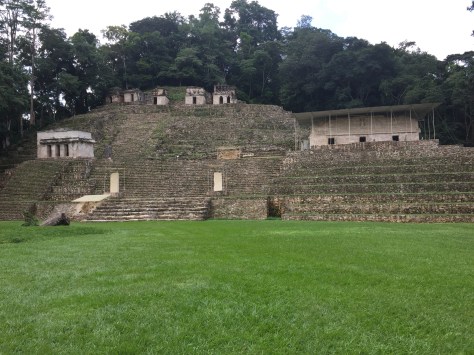
The notable rulers here were Chaan Muen the first and second. The paintings tell the tale of a Mayan society coming to the end of its domination, first ceremonial feasting, then war and then finally showing the ritual perforation of their tongues by the royal women for blood letting.
However, before the steps led us up to higher level of the acropolis and the rooms where the paintings are to be found, we saw the stelae showing Chuen Muen on his own and another with his mother and wife – mother in front, wife behind (and who us the most powerful?!). These are both originals, carved with obsidian tools. The minute detail is incredible. I love the sandals!
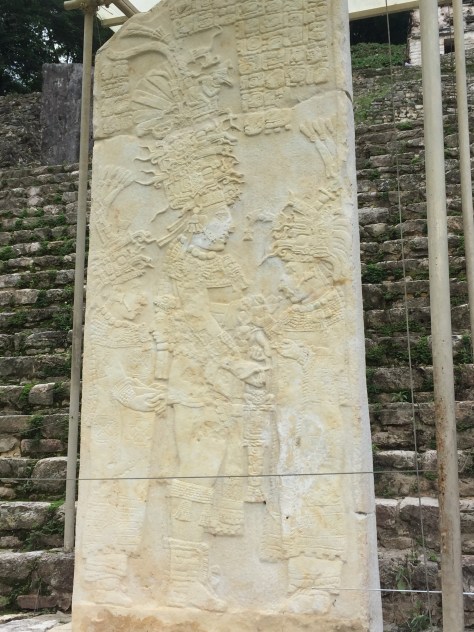
We then climbed up to the mural rooms. The paintings in the first and third rooms were quite clear and the colours remarkably strong. The central pictures of the battle scene were more difficult to make out. Given the age of the paintings, they are still extraordinarily well preserved.
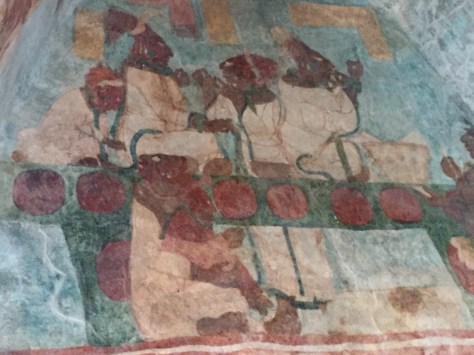
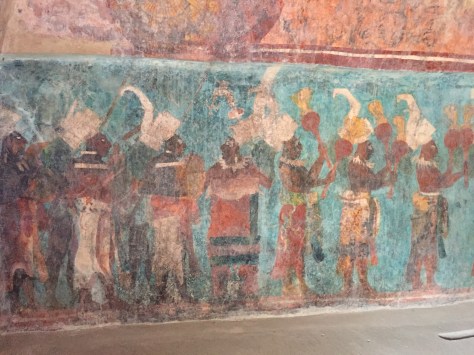

The buildings, though well preserved, are hedged by heavy forest vegetation which looks as though it is only too ready to take back the site it covered for hundreds of years.
We walked back through an avenue of trinket sellers who had not been there when we arrived but appeared as if by magic to form a guard of honour on our return. The bead work was colourful and there were wonderful feathered dream catchers. We maintained a high resistance, mainly due to our more or less diminished pesos and the fact that tomorrow we remove to Guatemala.
Back in the coach, we continued our journey to the lodges where we were to stay the night and travelled up the river to the atmospheric Yaxchilan. After an hour’s break we were off again – this time by boat!
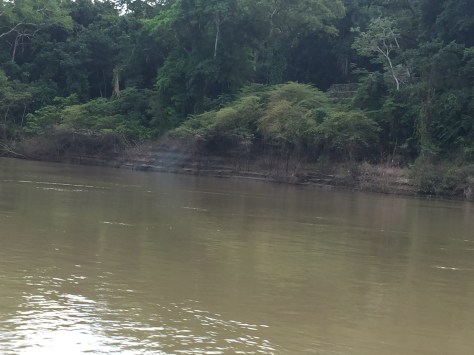 It was probably nearly an hour’s boat ride on the Usamacinta River, with Mexico on one river bank and Guatemala on the other. Yaxchilan was an important trading city and for over four hundred years it existed as an important trading centre between Bonampak and Tikal, deep in the jungle.
It was probably nearly an hour’s boat ride on the Usamacinta River, with Mexico on one river bank and Guatemala on the other. Yaxchilan was an important trading city and for over four hundred years it existed as an important trading centre between Bonampak and Tikal, deep in the jungle.
We arrived mid afternoon and the light was just perfect. To get to the site you walk up the path from the river, as the Mayan’s must have done. Eventually a clearing is reached and a large Mayan building blocks the path. This was viewed as representing the underworld and its dark passages had to be negotiated to reach the city’s main plaza.


The route through twisted and turned. Bats flew over our heads. Our torches exposed spiders on the walls. It was as sinister as I guess it was meant to be. Eventually we emerged into daylight again. It was a place of dark shadows. The green of the jungle was all around us. There is a lot more of the City to be unearthed. There are a lot of earth and tree covered mounds.


The rulers here had amazing names. Shield Jaguar I, Bird Jaguar IV and Shield Jaguar II. There was a ball court – we are back to human sacrifice here – and wonderfully carved stelae, but the glory of this site is the huge acropolis.

It is the largest building we have experienced. Its steps went on for ever above us. Not everyone attempted the climb. I did and made the summit eventually. The steps were uneven and went on and on. Our reward – a large building with a stone pillar in front of it and some magnificently carved friezes of the ball game, clearly depicting the action of pushing the ball with shoulder and elbow. The building also had the best example we had seen of the ‘roof comb’ the almost honeycombed masonry on the top of the building.


Having got our breath back, heard all about what we had found there – those wonerdful ball game friezes ……..

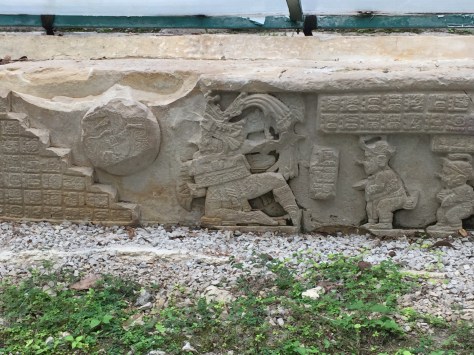
and taken our photographs – including that of a large beatle –
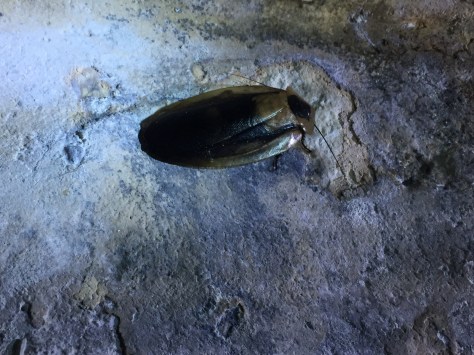
it was time to descend again.
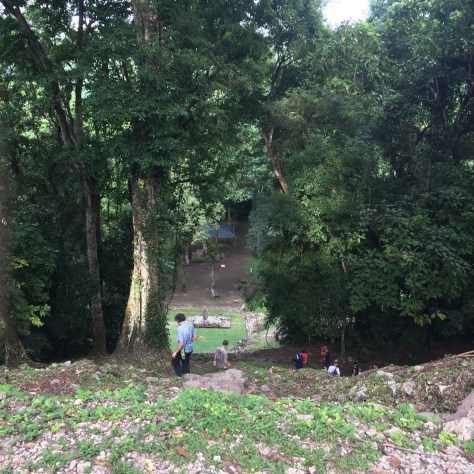
No mean feat, given the lichen covered steps and steep gradient. Nearly at the bottom we were diverted to another building which housed more wonderfully carved stelae. The carvings were Impressive.



Including an amazing lintel carving –

And another rain god…..

We eventually left this magical place to its green tinged splendour, back through the underworld passages and the Mayan pathway to our boat. Although no the way, martins dipped over the water and stately herons sat in the reeds of the riverbank. Howler monkeys swung in the trees and a crocodile slid into the water……..

We arrived back to our reed thatched accommodation in good time for dinner. One of our party had generously bought wine which he generously shared with us all with dinner and a jolly last evening in Mexico was had by all
. Tomorrow Guatemala.











 We eventually emerged into the first cleared area with a temple and 9 stelae with sacrificial stones in front of it at its base.
We eventually emerged into the first cleared area with a temple and 9 stelae with sacrificial stones in front of it at its base. 
 The Temple rose high into the air and apparently goes down 7 metres underground. Along the broadest side of the plaza stood the buildings of the administration area banked up high, where kings were crowned and burial ceremonies took place.
The Temple rose high into the air and apparently goes down 7 metres underground. Along the broadest side of the plaza stood the buildings of the administration area banked up high, where kings were crowned and burial ceremonies took place.  Facing Temple 1 on the opposite end of the plaza another tall temple, dedicated to Jasaw Chan K’awill’s wife. On the 4th side of the square were the buildings believed to be the royal bedrooms.
Facing Temple 1 on the opposite end of the plaza another tall temple, dedicated to Jasaw Chan K’awill’s wife. On the 4th side of the square were the buildings believed to be the royal bedrooms.



